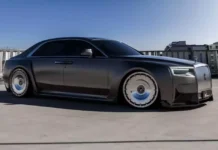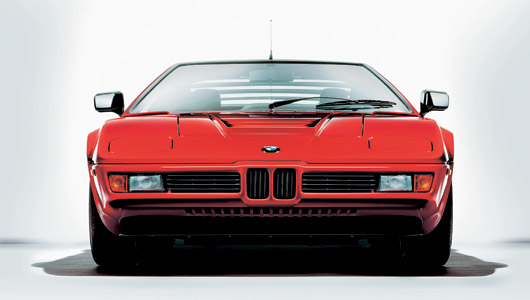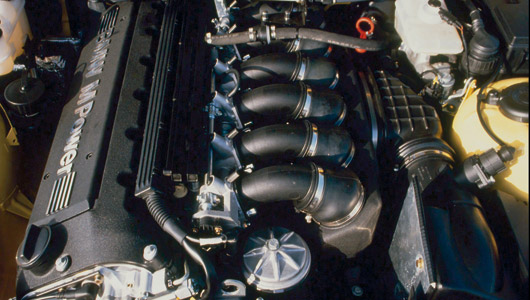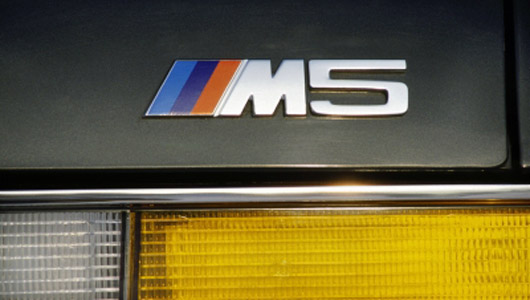High-performance cars have always been the dream of true car enthusiasts. And BMW, as the leading figure in the automotive industry, has the mission to fuel and transmit that passion. Let’s review the 40 memorable years of BMW M GmbH.
Part II: A shining star in the world of sports cars
Following the initial successes, Motorsport GmbH underwent a remarkable transformation to become a shining star in the world of racing cars.
Sensational news in the sports car world in 1978: BMW M1
The next project was to produce Motorsport GmbH’s first competitive car not based on a conventional production model: the BMW M1. Jochen Neerpasch, the executive director of Motorsport GmbH, worked with Bernie Ecclestone and Max Mosley to create the ProCar Series as an opening race, leading to most of the F1 Grand Prix races in Europe during the 1979/80 season.
As the minimum production requirement for recognition in the FIA Group 4 was 400 cars, the M1 was also introduced as a regular road model, with its ultra-low engine placed at a height of 1.4 meters. The M1 with 277 horsepower made its first appearance on the market in 1978 with an exact price of 100,000 German Marks, but the demand far exceeded supply. When 130 cars were completed after one year, there were more than 300 waiting orders to be fulfilled. From the beginning, the M1 was the fastest road-going sports car produced in Germany, timed by a leading car magazine – reaching a top speed of 264.7 km/h in a 1979 test.
With a 470 horsepower engine, the ProCar race version had a top speed of over 300 km/h. And it was one of the cars used by Niki Lauda, who won the F1 championship twice, in 1979, winning 3 out of 8 ProCar M1 races and finishing second in another occasion.
Driven by the outstanding success and excellent image of the M1, Motorsport GmbH decided to build a new model. Based on the regular 5 series, the development engineers built the M535i in 1980, with a two-valve, 6-cylinder engine “borrowed” from the 635CSi. With an engine output of 218 horsepower, the 5 Series quickly became the speed king on racetracks.
1980 F1: BMW creates a world champion engine.
Jochen Neerpasch left Motorsport GmbH in 1980, and Dieter Stappert took over as team manager. Successor Paul Rosche, responsible for BMW racing engines since 1969, was appointed technical director, responsible for taking BMW to the highest class of sports cars – F1, and giving the green light for the engineers at Motorsport GmbH to develop BMW’s first powerful F1 car.
Using a 4-cylinder engine with a displacement of only 1.5 liters, based on a standard production block, the group of experts around engine wizard Paul Rosche built a power plant developing an astonishing 800 horsepower. The secret behind the incredible performance was the combination of 16-valve technology and the first-ever application of a turbocharger in F1, controlled by the DME (Digital Motor Electronics) processor.
From the start, this turbocharged engine demonstrated its supremacy on the racetrack, achieving the biggest victory in 1983: just 630 days after BMW’s F1 engine first appeared, Brazilian driver Nelson Piquet won the world championship with a BMW Brabham. And by 1987, BMW had won a total of 9 Grand Prix victories with this successful engine.
BMW M turbo engines attracted not only the Brabham team but also Arrows, ATS, Ligier, and Gerhard Berger. In 1989, Road&Track – a leading American car magazine – demonstrated the highest efficiency of this engine at 900 horsepower, reaching 0-160 km/h in just 4.8 seconds. And Paul Rosche believed that this 4-cylinder engine could develop even more power. “It had to achieve around 1400 horsepower, but we don’t know the exact figure because the engine’s dynamometer only went up to 1280 horsepower”.
Another important event in 1983 went almost unnoticed: BMW Motorsport GmbH became a performance-oriented development company. This led to the creation of separate development centers for engines and suspension systems to supply these activities with input. And in relation to customers, Motorsport GmbH provided many state-of-the-art car service packages for a long time, with accessory and optional equipment sales accounting for a significant share of sales.
BMW M1 6-cylinder engine
In 1984, Motorsport GmbH once again became a highly esteemed name, especially in all performance-oriented sports car enthusiasts. The first-ever 4-valve 6-cylinder inline engine being revved up for the first time on the M1 then appeared on the M635CSi Coupé and M5. The hand-built M5 at Preussenstrasse quickly became a legend in the world of sports cars.
It is precisely the “wolf in sheep’s clothing,” with 286 horsepower, surpassing the engine power of the 518i nearly threefold. At first glance, the M5 is hardly distinguishable from other models of the same series. Its top speed of 245 km/h surprises many drivers.
1986: The appearance of the M3
After completing its activities in F1, Motorsport GmbH focused all its energy on touring car racing. And this led to the birth of the BMW M3 in 1986, a compact two-door sports car that represents the first parallel development of BMW in volume production and sports cars. The project to produce 5,000 cars within 1 year to be recognized as touring cars was conceived from the start and complied with almost all the regulations in Group A. In 1986, Motorsport GmbH moved to its second home in Garching on the outskirts of Munich.
The result was a remarkable success for BMW in all respects. From the start, the bright white car in BMW Motorsport livery won the world championship at the World Touring Car Championship in 1987, with Italian driver Roberto Ravaglia.
A maximum output of 195 horsepower is provided by the 4-valve, 6-cylinder engine, equipped with the standard triggertooth system, making this high-performance car the benchmark at the time.
In the following 5 years, the M3 continued to be the leader, bringing home two Touring Car Championships, winning twice in the German Touring Car Championship DTM, and a series of awards at other international events, becoming the most successful touring car.
The M3 also proved to be a road-going car for customers, achieving sales figures that no one would have thought possible. The sales of the first M3 series reached 17,970 units, including 600 M3 Sport Evolution 2.0l models and 765 hand-built M3 convertibles. The M3 also showed that sports activities and environmental protection are not necessarily contradictory, as the M3 provides excellent fuel efficiency standards in relation to its power and performance.
2nd generation M5
The M5 entered its second generation in 1988, with the original 6-cylinder inline engine with a displacement of 3.6 liters then switched to 3.8 liters with an increased output from 315 horsepower to 340 horsepower. The car is a unique combination of a purebred sports car and a stylish transport vehicle.
When the next-generation 3 Series was set for launch in 1990, Motorsport GmbH worked on the new BMW M3 – the car that debuted in 1992 with a 3.0-liter 6-cylinder, 4-valve engine with a maximum output of 286 horsepower. This 6-cylinder M3 was also the first BMW engine to feature variable camshaft timing VANOS – an infinitely variable camshaft adjustment system at the service of dynamic and sophisticated engine characteristics.
Another unique feature of this car was the introduction of the management of the engine, developed by BMW, with a control capacity of 20 million instructions per second.
Car of the century – 2nd generation BMW M3
The customers and the media immediately fell in love with the M3 at first sight. The waiting list was immediately full, and the first accolades and awards were not far behind. Readers of German sports car magazines and BMW motorbike magazines twice in a row named the BMW 3 Series the “Car of the Year.” Auto Plus magazine in France even chose the M3 as the “Car of the century” after a comparison with luxury market models like the “Car of the century.” And immediately after the M3 was launched in the US market, the editors of Automobile Magazine honored this new star with the “Car of the Year” award – the first time in the history of this award that it went to an imported car.
From 1992 to 1996, Motorsport GmbH built over 85 4-door 3 Series race cars based on this M3 model, with Johnny Cecotto behind the wheel winning the ADAC GT Championship in 1993 and setting out to conquer the US sports car market. Therefore, it is no surprise that the later M3 400-horsepower PTG subsequently won the IMSA championship in 1996.
Foresighted customers could own an M3 of their own – just like any other BMW – built to personal desires since BMW Individual was established by Motorsport GmbH in 1992. This specialist company fulfills even the most individual wishes, far beyond the “normal” options packages. With the establishment of BMW Individual, Motorsport GmbH once again became a pioneer in the market, as well as opening up personal styling in the world of cars.
With the new model for business development and the rapid expansion, the company had to adjust once again: It required a new name that encompasses the entire range of activities. Since August 1, 1993, Motorsport GmbH has been renamed BMW M GmbH.
In 1995, the best-selling BMW M3 received even more power – 321 horsepower from a 3.2-liter displacement, with over 100 horsepower per liter – setting a new standard for competitors and accompanied by torque. A pair of VANOS systems were also used for the first time, this advanced system along with the continuous variable adjustment of the intake and exhaust camshafts. Another feature is the introduction of a 6-speed manual gearbox as standard for transmitting drive to the rear wheels.
>> Part III: The BMW M GmbH empire
Ngọc Điệp (TTTĐ)















































